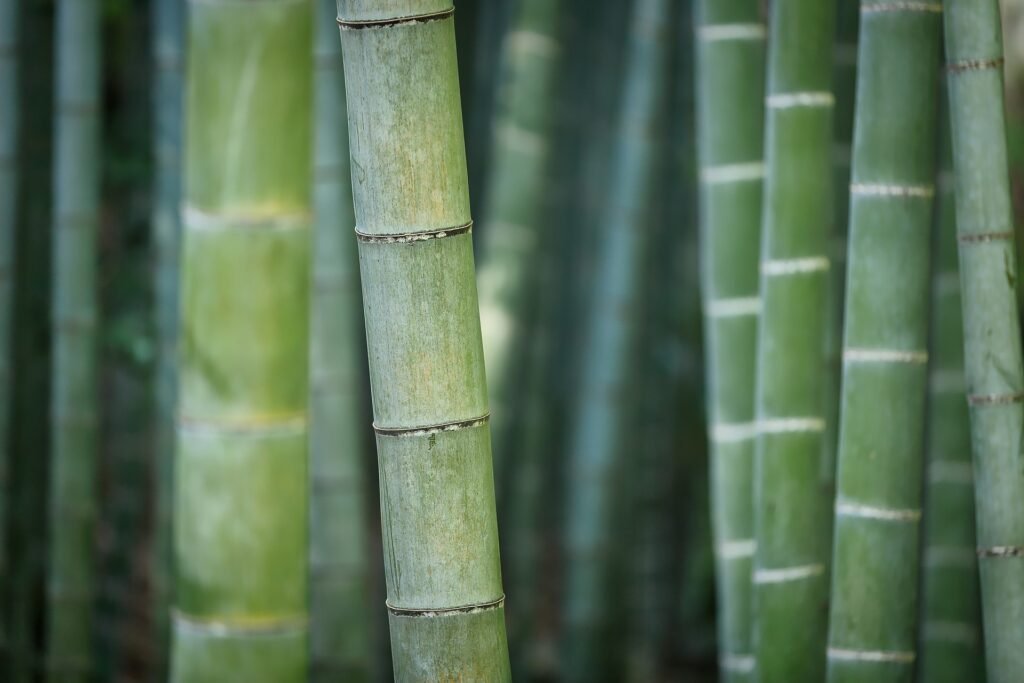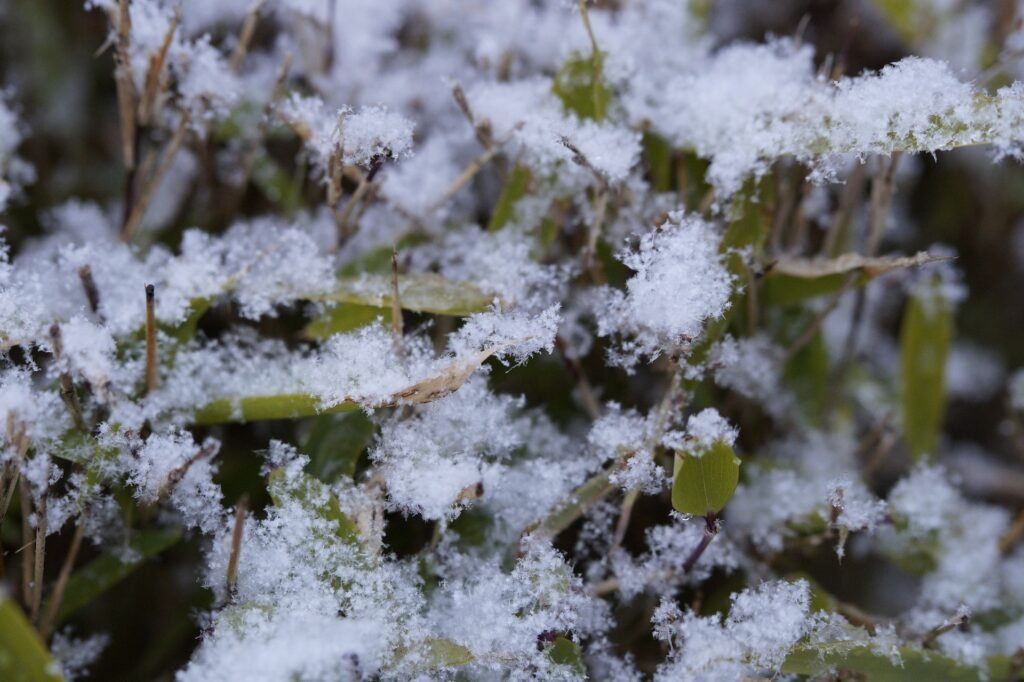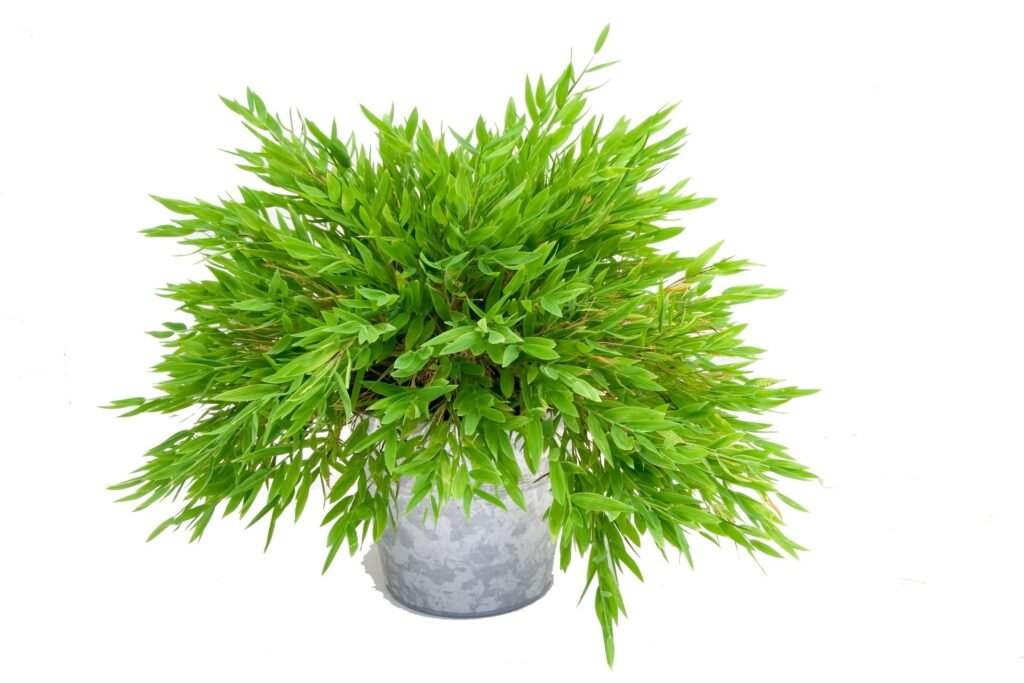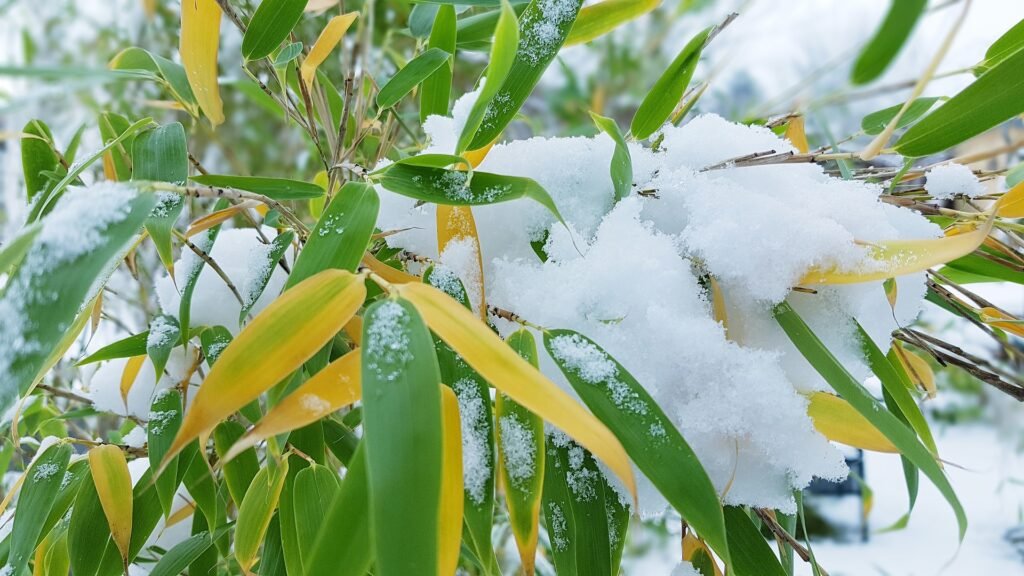How To Protect Bamboo In Winter
0Shares
Do you have a bamboo plant in your garden or yard? Are you wondering how to protect bamboo in winter so that it survives the cold weather? Don’t worry, though; we got you covered!
Bamboo is a versatile and beautiful plant that adds an exotic touch to any garden. But while it’s very hardy, bamboo isn’t immune to the cold winter months. If you want your bamboo plants to thrive year-round, there are a few steps you can take to protect them from the elements.
In this article, we’ll discuss how to properly care for bamboo in winter so that it stays healthy and vibrant throughout the season. We’ll cover topics such as mulching, pruning, and fertilizing so your bamboo will come out on top despite even the harshest winters!
How To Protect Bamboo In Winter: Tropical vs Temperate Bamboo

Although many bamboo species can withstand temperatures as low as 15 or 20 below zero Fahrenheit, many prefer tropical or subtropical environments. These tropical bamboos have little chance of surviving a harsh winter covered in several feet of snow. Alternatively, if they do, there’s a considerable probability that their leaves will fall and their culms will sustain significant frost damage.
The strong underground rhizome is where bamboo will most likely hold onto its life power. So, you must avoid truly tropical types, such as those belonging to the genus Dendrocalamus and Gigantochloa. But, if the temperature never falls below 20° F, you can get away with planting any subtropical Bambusa kinds.
These tropical and subtropical species contain most of the clumping bamboo species. Nonetheless, some species of clumping bamboo are very tolerant of cold temperatures. If you’re seeking clumping, hardy, evergreen bamboo, look at the genus Fargesia. They frequently thrive in – 20°F conditions.
Nevertheless, if you’re looking for bamboo that spreads quickly or a runner, you can locate an evergreen and cold-tolerant type. You will find the best variety in the Phyllostachys genus, including several cold-tolerant timber bamboos.
How To Protect Bamboo In Winter: Preparing Young Bamboo Plants

Young bamboo plants, in particular, require extra attention at this time of year to ensure they survive the colder months. In order to prepare young bamboo plants for winter, it’s important to understand the weather conditions in your area and provide appropriate protection for the plants.
One key element of winter preparation for young bamboo is insulating them from cold temperatures. You can accomplish this by mulching around the plant or wrapping it in burlap or other protective material. It’s also important to keep the roots moist during cold periods by covering them with an inch or two of soil.
Additionally, you may need to give some supplemental water if your area has prolonged dry spells. Young bamboo should also be protected from strong winds during winter months as they are especially susceptible to wind damage. Try setting up a wind barrier, such as a bamboo fence or wall, to help block gusts of wind that could threaten your plants’ health.
If there’s snowfall in your area, remember that snow acts like an insulator on most occasions- so don’t panic if you see snow accumulating on or around your bamboo!
Finally, remember that fertilizer should only be applied sparingly and never when frost is present. For young bamboo, adding fertilizer will cause excessive growth at times when other species are resting – meaning your plant may not have enough energy left over for sustained growth through the season.
How To Protect Bamboo In Winter: Preparing Bamboo in Pots and Planters

If you have bamboo grown in pots and planters, there are a few extra steps you’ll need to take to protect it from winter weather.
🪴 Choose a Pot or Planter That’s Suitable For Bamboo
When selecting a pot for your bamboo plant, look for one wide enough to accommodate the plant’s roots and growth potential. The pot should also be strong enough to hold the weight of bamboo stalks and allow water to drain from it easily. Make sure it has bottom holes too, which will help with water drainage.
🪴 Get the Soil Right
In terms of soil, you’ll want something that retains moisture while simultaneously draining well – use two parts soil mixture with one part compost or sphagnum moss if needed. Alternatively, you can mix four parts peat moss with two parts sand. Both these soil mixtures give good nutrition for your potted bamboo and provide adequate aeration for optimal root health.
🪴 Keep it Warm
When temperatures drop below 60°F (15°C), bamboo can start suffering from cold shock. To prevent this from happening, move planters indoors or into an area where temperatures stay above freezing point during winter. Cover outdoor pots used for smaller species with bubble wrap until the warmer season arrives.
🪴 Water Wisely
Since bamboo plants require moist soil all year round, you must continue watering them even during winter months. The amount of water will depend on several factors, including size and type of plant, as well as temperature levels outside.
Therefore, pay attention to how often your bamboo needs watering. Usually, every two weeks or so should be enough but increase the frequency if necessary in hotter climates or during periods when rainfall is scarce.
How To Protect Bamboo In Winter: Preparing In-Ground Bamboo

During winter, you’ll have to make sure that your in-ground bamboo plants are protected from the elements. Winterizing bamboo plants planted in the ground requires a few extra steps.
📍 Assess the Conditions
The first step in prepping your in-ground bamboo for winter is assessing the conditions. Pay attention to temperature changes, moisture levels, and other environmental factors that can affect your plant’s health.
If possible, get a soil thermometer to monitor temperatures directly at the root level. This will give you an accurate picture of what’s going on beneath the surface and allow you to adjust accordingly.
📍 Make Sure It’s Well Watered
Bamboo needs plenty of water to stay healthy during cold weather, especially before frost or freeze hits. During particularly dry times, it’s typically advised that bamboos receive at least 1 inch of water each week (or more if necessary). Regular watering ensures that your plant stays strong and gives it a better chance of surviving freezing temperatures with less damage.
📍 Utilize Mulch and Other Protective Materials
Mulching around your in-ground bamboo plants can provide extra protection against cold temperatures. Consider using straw hay or wood chips since these materials absorb moisture, which can help keep roots from freezing over. Moreover, wrapping your most vulnerable plants with burlap or blankets during especially cold nights may provide additional protection against frost damage.
📍 Trim Dead Bamboo Leaves and Foliage
Before winter arrives, trim away any dead leaves or foliage from around your plants since this debris traps moisture, potentially leading to freezing or other types of damage over time. Removing this material also allows sunlight and air circulation to reach the foliage more easily, which helps ensure its health throughout colder seasons.
With these simple steps, you should be able to prepare your in-ground bamboo for winter weather successfully! Keep in mind that every climate is different, so it’s always wise to check with local gardening experts who can provide specific advice about how best to care for any type of plant during colder months in your area.
Additional Tips on Preparing Bamboo for the Winter
If you’re still unsure of how to winterize your bamboo plants, here are a few additional tips to consider:
✅ Do Not Rush to Cut The Bamboo Culm
Although it may be tempting to cut the culms of bamboo during the winter season because of their dried-out appearance, resist the urge! Wintertime is actually an essential part of regenerating new growth. Bamboo culms need time to heal, so if you cut them too soon after a frosty season, you could weaken your plants and stunt their growth.
So don’t rush. Let them rest and fully recover so they’re in optimal shape come springtime!
✅ Don’t Rely on Anti-Desiccant Sprays
You might be tempted to reach for the anti-desiccant spray when frost hits, but it’s really not a great solution. Not only is spraying your plants labor-intensive if you have a large area of bamboo, but the cold winter temperatures can increase the elasticity of shoots and cause them to break more easily under that heavy coat of protective wax.
No one wants to find their bamboo patch looking like a mangled mess once spring rolls around, right? Unless you’re looking to create an intentionally abstract piece of living art! So don’t make the mistake of relying too heavily on anti-desiccant spray during the winter; it isn’t worth the cost and effort!
✅ Allow snow to melt naturally
If your area experiences heavy snowfall during winter, try not to disturb its melting process. Bamboo can handle a bit of cold weather and some light snowfall, but too much moisture can lead to rotting or other types of damage. So instead of clearing away the snow with a shovel (which could potentially remove important nutrients from the soil), just sit back and wait for nature to take its course!
✅ Mulch Generously
Mulching is always a good idea when it comes to protecting your bamboo from cold temperatures, but be sure to do it generously! A thick layer of mulch will help insulate and protect the roots during wintertime, so don’t skimp on this step.
If you’re unsure about how much mulch to apply in any given area, consider consulting a local bamboo expert for specific advice on your region.
✅ Don’t Panic if Leaves Fall off in Winter
Don’t worry if you see a few leaves from your Bamboo plant dropping during winter, as that is perfectly normal. The decrease in daylight hours, combined with cooler temperatures and lack of humidity, can make it hard for this tropical species to thrive; however, if it’s not exposed to extreme cold or frost, chances are the Bamboo will survive.
To help ensure a happy Bamboo plant over winter, keep the soil slightly damp and try giving it lots of indirect light. Removing fallen leaves immediately is also a good idea, so they don’t smother the growth of new ones.
✅ Plant Hardy Bamboo Species Early
If you’re a bamboo fan and want to add some to your yard this winter, consider planting a hardy species designed to withstand colder temperatures. Bamboo varieties such as Fargesia rufa (red fountain bamboo) or Pleioblastus viridistriatus (striped bamboo) are great options for colder climates, so do your research and ensure that you get the right type of bamboo for your specific zone. Planting early will also give them time to establish a robust root system before the winter weather really hits!
How To Plant Bamboo in Cold Climates

If you plan on planting bamboo in colder climates, there are a few things you’ll need to consider.
① Plant Selection
The first step in successfully planting bamboo in colder climates is selecting the right type of plant. Bamboo thrives in USDA Hardiness Zones 5-11, but some varieties are more suited to cold weather than others. Before purchasing a bamboo variety, research its cold tolerance and select one that will survive in temperatures lower than your area usually experiences.
Consider the height of your chosen species as well – smaller varieties tend to fare better against strong winds or unexpected drops in temperature.
② Site Preparation
Once you’ve selected the right type of bamboo for your climate, it’s time to prepare the site before planting. Make sure that your chosen spot offers protection from harsh winds or flooding during winter months – also, consider drainage when deciding exactly where to put each plant.
Keep an eye out for any existing plants nearby, like trees or shrubs, since these may cause shading, which could reduce the amount of sunlight available for your bamboo shoots. Lastly, take time to remove all weeds from the area, so they don’t compete with your new plants once they’re planted.
③ Planting Instructions
When it comes time for planting, start by digging holes for each shoot at least 12 inches deep and large enough to fit all the roots comfortably without crowding them too much. Place fertilizer into each hole prior to placing shoots inside and ensure good drainage by adding mulch over each hole before patting down soil taken from outside the planting sites around each root ball until it is firmly packed inside its new home and flush with ground level outside the site itself. Be gentle when doing this last part, as it’s important not to damage any delicate root systems while transferring each shoot into its new location.
Frequently Asked Questions
Q: How can I protect my lucky bamboo plant during winter?
Lucky bamboo plants are great additions to any home, but they can be tricky to care for during winter months. Because these plants are native to warm climates, the cold weather can be especially damaging and make it difficult for your lucky bamboo to thrive. If you want to make sure that your plant survives the winter, there are some things you can do! First and foremost, it’s important to keep your lucky bamboo away from cold drafts and in a location where temperatures won’t drop 60 degrees below. Placing it near a radiator or other heat source is a great way to keep your plant warm and healthy during the colder months. Be sure not to overwater your bamboo either, as too much water can lead to root rot in colder temperatures. Lastly, remember that regular misting can also help keep your plant hydrated – even when temperatures drop!
Q: Can running bamboo survive in cold climates?
A common misconception about running bamboo is that it won’t survive in cold climates, but this isn’t always the case! It depends on the bamboo variety – some species, like Phyllostachys robusta, can withstand temperatures as low as -10°F. That’s pretty impressive for a tropical plant! If you want to get your hands on some cold hardy bamboo, research to find out what varieties grow best in your climate.
Q: What do bamboo rhizomes look like?
Well, these special creeping underground stems bear an interesting resemblance to potatoes! That’s right – they almost look like small potatoes with pointed ends in their natural state. What’s even more remarkable is that these rhizomes can propagate large stands of bamboo and even send up new shoots from a far distance away from the mother plant.
Q: What does an American Bamboo Society recommend for protecting bamboo in cold climates?
If you’re looking for ways to protect your bamboo in cold climates, the American Bamboo Society has some great advice. They suggest mulching around the plant, wrapping it with burlap during winter months, and shielding it against the harsh wind – this can help retain warmth in the root area. Planting in moderate sun and partial shade is another recommended strategy since intense direct sunlight can harm young shoots in cold climates. Lastly, keeping up with general maintenance on the bamboo by ensuring it gets the nutrients it needs and pruning any dead or dying stalks.
Q: Why is my new planted bamboo not growing?
Don’t worry if your new bamboo plantation isn’t growing as quickly as you’d planned; it’s probably simply adjusting to its new habitat and needing some extra time. A newly planted bamboo typically takes a few weeks to start growing and developing strong, healthy root systems that will help it survive in the future. The keys to your bamboo’s success are sunlight and water, so make sure you give it plenty of both! Giving the soil additional nutrients, such as fertilizer or compost, may also be beneficial.
Final Words
Caring for bamboo plants in cold climates can be a challenge, but with the right knowledge and techniques, it’s possible to protect your plant during winter months successfully. By providing the right environment, nutrients, and maintenance to your bamboo, you can ensure that they’ll continue to thrive year-round – regardless of what Mother Nature throws at them! Remember to always check with local gardening experts if you have more questions about how best to care for your specific type of bamboo.
0Shares
